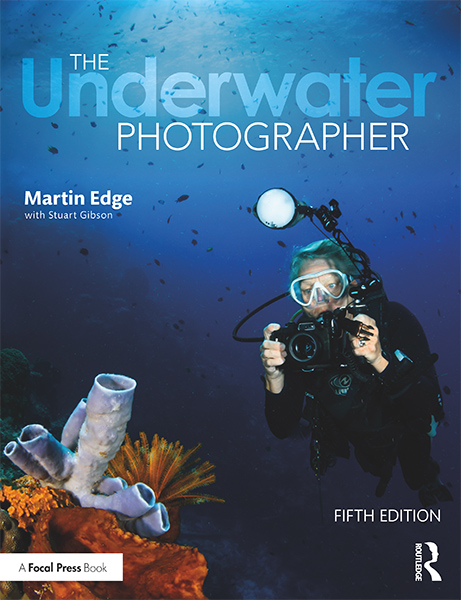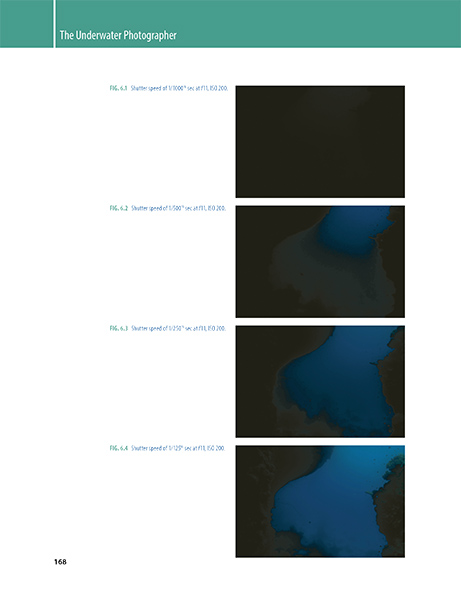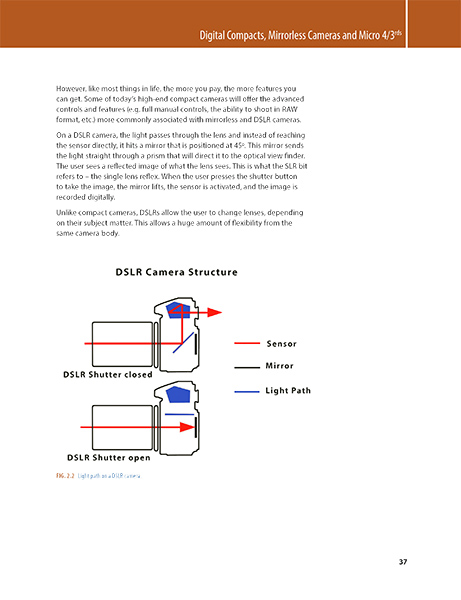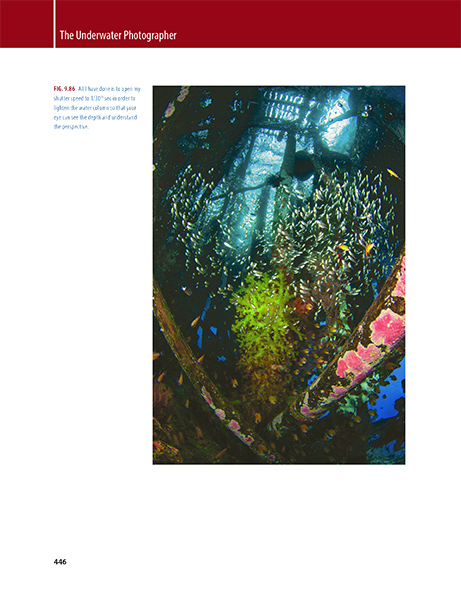Review: The Underwater Photographer by Martin Edge

Whenever I meet up with Martin Edge, I find that we always end up discussing underwater photography. He has boundless and infectious enthusiasm for the subject that rubs off on any audience. He is also one of those rare people that are prepared to share his extensive knowledge completely selflessly with pretty much anyone. Meeting up with him is always a joy, and one comes away motivated for new projects and ideas. This unselfish desire to share his knowledge and to assist others is reflected in his seminal text, “The Underwater Photographer.”
Wetpixel’s Steve Williams reviewed the fourth edition of the book back in 2010. Scrolling forward to a very different time, Martin has just released the fifth edition, and I was fortunate to have been supplied with an eBook version to review it for the Wetpixel audience.
Think and Consider
I have often thought of Martin’s books as being reference works, containing pretty definitive information about a vast majority of topics. With the latest version, I recognize that I am not entirely correct. If used as designed, Martin presents a philosophy that, if followed diligently, will result in an individual creating better images. Also, of course, it is a collection of handy reference material.
Martin has been teaching underwater photography for a very long time. One of the advantages of teaching any subject is that by explaining things, you help to enhance your own understanding of them. Martin has developed and refined his philosophy and educational technique, which makes it more effective. While Martin may disagree, I think on first reading, at least, the reader should work largely from front to back, albeit possibly skipping sections that are not relevant. There is a logical progression in Martin’s systems, and this is followed by the text’s sequence. Certainly, subsequent readings can be focused on areas of immediate interest.

The book
The book consists of 10 chapters, covering everything from camera types and selection, through to lighting and composition. Martin has solicited help in some of the chapters with areas that he is perhaps slightly less familiar:
- Mario Vitalini - compact and mirrorless cameras
- Shanon Conway - full frame SLR cameras
- Alex Mustard - SLR water contact optics
- Working the subject and “snooting the light” - Stuart Gibson
- LED lighting - Sascha Jansen
- Supermacro - Alex Tattersall
- Motion blur - Nick More
- Wreck Photography - Nick Blake
- Camera and housing maintenance - Kevin and Maggie Reed.
The theme that ties all the elements in the book together is Martin’s “Think and Consider” system. Thought the book, he emphasizes that capturing stunning images is the result of a series of decisions, many of which revolve around an individual’s resolution to be a photographer underwater, rather than a diver that takes pictures. Commitment to this goal unlocks the technical and creative techniques that are listed throughout this book.

Martin also provides numerous practical tutorials and exercises that illustrate various techniques. This is enhanced by Martin’s direction of his images that are used in the book. This also gives an insight into his mindset, seeking perfection, and never being completely happy with an image to continually improve and learn. Throughout the book, the key points of each section are summarized in convenient key point blocks, helping retention and allowing for skim reading on subsequent forays into it.

Composition is always a personal decision, but Martin’s chapter on the subject goes a long way towards demystifying the process. He offers a series of decision-making guidelines that lay out a series of steps. I think it is the most effective treatise on the subject for the underwater photographer available. While it does follow a recipe, the steps are presented as ideas rather than a dogma. It is really merely a matter of formalizing choices, and this in itself promotes critical thought.
The pictures throughout the book have been refreshed and help remind us that Martin “practices what he preaches.” The quality of the photographs is, I think, significantly improved over the already high standard in the previous edition. Martin frequently uses his images as examples to illustrate the points he makes in the text. He is critical of his own photos, commenting on when and why he thinks a technique had worked and when it didn’t, suggesting why.

Inevitably, all technically oriented books are out of date on the date of publication. Indeed, there are gaps in the sections on equipment in the book, reflecting the changes that have taken place over the last few years. I still feel that the best source of information on gear will be your local specialist underwater camera store, combined with rapidly updating resources like the Wetpixel forums. Martin does not go into post-production at all in this edition, which perhaps reflects the limitations of trying to tackle the subject in s a limited amount of space. In addition, there are numerous excellent specialist resources for those that are seeking to improve their editing skills. That said, it is always interesting to discover how photographers sort and rank their images, and this could have been added without significantly increasing the size of the book.
The huge amount of valuable information presented in the book is slightly marred by the quality of the proofreading. Names and words are misspelled, diagrams mislabelled, and there is a tendency for strange punctuation and syntax. I am possibly the last person that should comment on others’ spelling (!), but I feel that in this instance, the publisher has not really covered themselves in glory. I should also point out that the review copy that I was supplied with was a publisher’s pdf version, so these glitches may not be reflected in the text on sale.

Who should buy this book?
If you are starting out as an underwater photographer and making the (considerable) investment in underwater photography gear, this book (along with Alex Mustard’s Underwater Photography Masterclass) may well be the best two purchases you can make. If you own the previous edition, you should buy the book for the updated information, to remind yourself of Martin’s many tips and tricks and to luxuriate in his beautiful new images. I find that having copies of this book (and Alex’s) with me on trips allows me to get my head in the right space to be creative and technically productive. In short, this edition of The Underwater Photographer should be on every underwater photographer’s bookshelf. I would also suggest that the eBook versions of this and Alex’s books are a worthwhile investment, allowing them to be carried with you on trips and to be used as references in the field. Of course, if you prefer paper versions, this may mean you need both!
The Underwater Photographer is available in softcover, a limited edition hardcover, and a VitalSource eBook or Kindle book (via Amazon only). They are available from the publisher, online book stores, or your local underwater imaging specialist.
FTC Disclosure
An electronic copy of the Underwater Photographer was supplied free of charge to the reviewer.